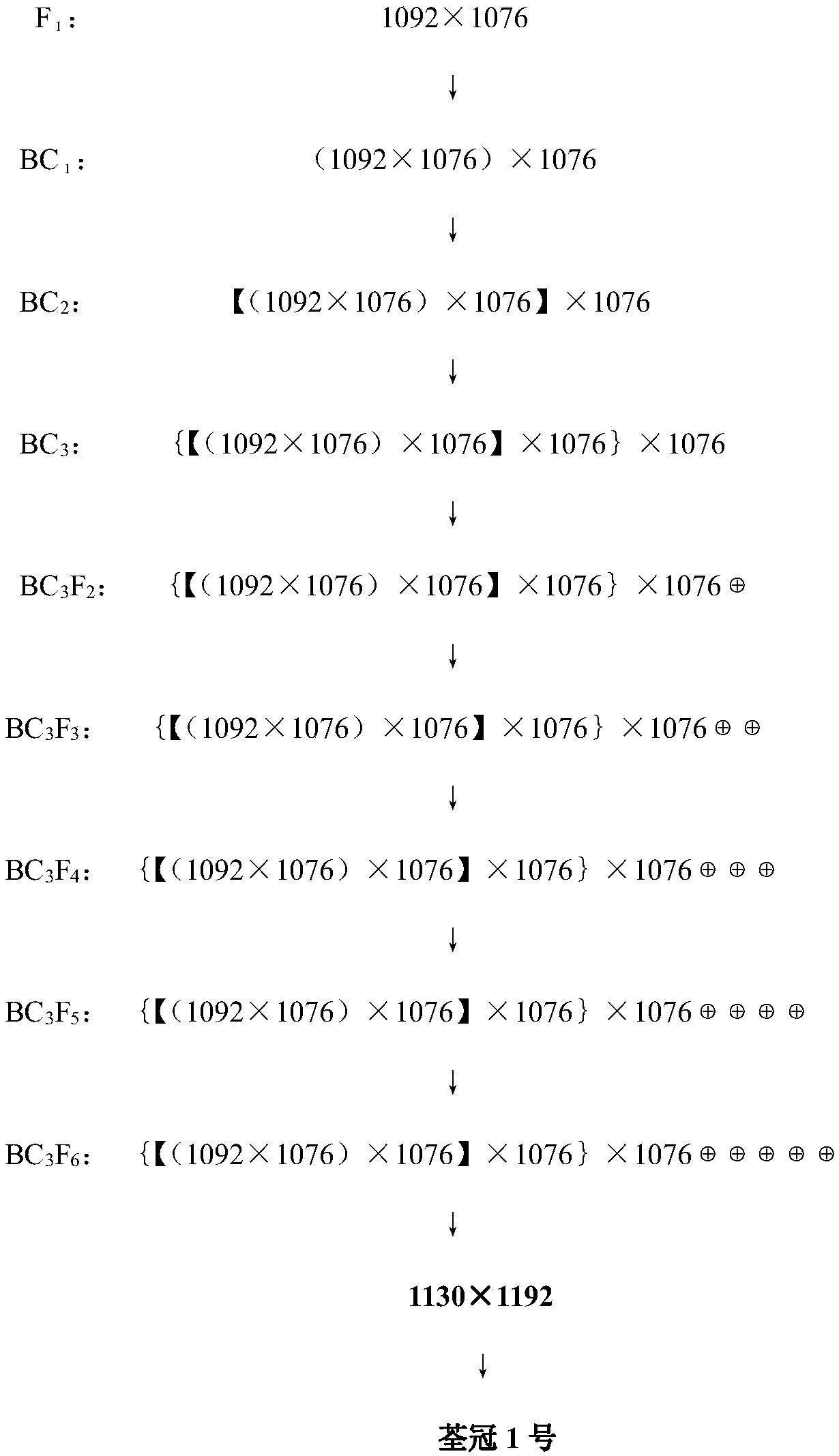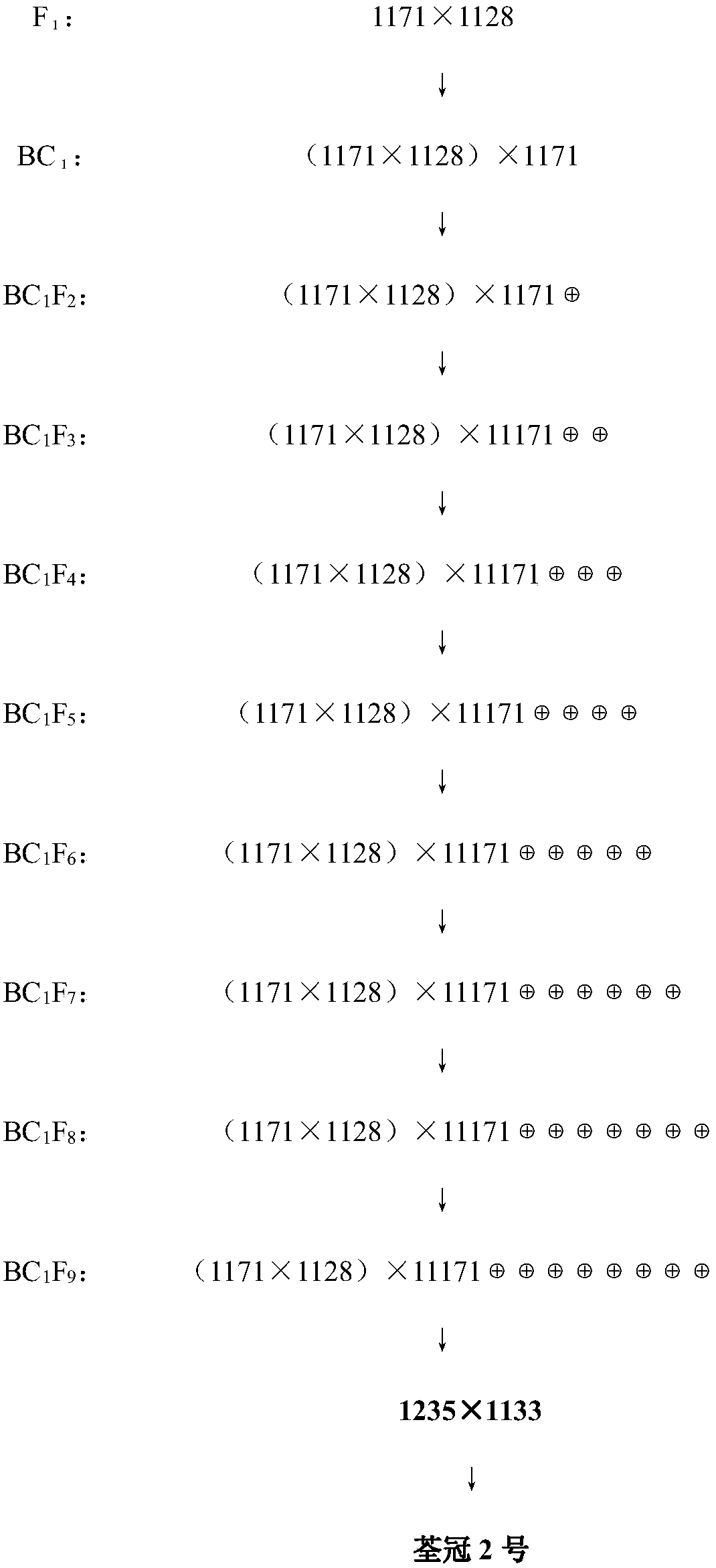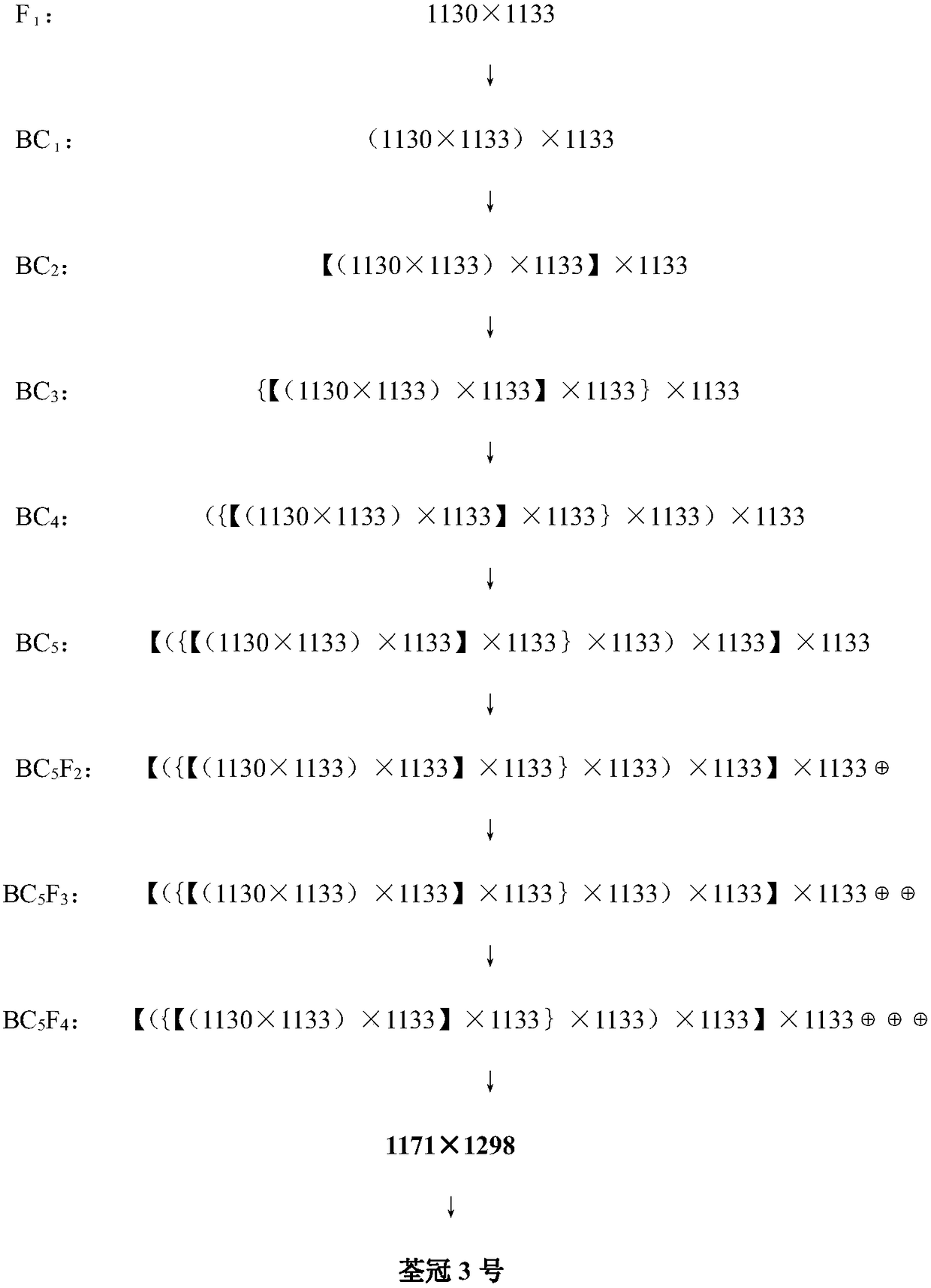The Breeding Method and Application of the Non-Manny Type Pumpkin
A pumpkin and type technology, which is applied to the field of selection and breeding of vine-free honey-type pumpkins, can solve the problems of unfavorable dense planting of honey-type pumpkins and the like, and achieves the effects of enhanced natural environment adaptability, strong adaptability, and fine-textured powder.
- Summary
- Abstract
- Description
- Claims
- Application Information
AI Technical Summary
Problems solved by technology
Method used
Image
Examples
Embodiment 1
[0056] Embodiment 1: as figure 1 As shown, the breeding of Chinese pumpkin material 1130 with long neck and cylindrical shape without vines and Quanguan No. 1 variety
[0057] 1. In the winter of 2005, the homozygous material 1092 of Chinese squash without vines and the homozygous material 1076 of cylindrical Chinese squash with long necks and long vines was crossed at Sanya base in Hainan;
[0058] 2. F 1 It was planted in Hefei, Anhui in the spring of 2006. The plants showed no vines and flat pear-shaped fruits. BC was obtained by backcrossing once with 1076 as the recurrent parent 1 ;
[0059] 3. BC 1 In the winter of 2006, the segregation was planted in Sanya Base, Hainan, and then the recurrent parent 1076 was backcrossed with a vineless, long-necked cylindrical individual plant to obtain BC 2 ;
[0060] 4. BC 2 In the spring of 2007, it was still segregated when planted in the base of Hefei, Anhui, and then the recurrent parent 1076 was backcrossed with a single pl...
Embodiment 2
[0064] Embodiment 2: as figure 2 As shown, the breeding of Chinese pumpkin material 1235 and Quanguan 2 without vines
[0065] 1. In the spring of 2010, the homozygous material 1128 of Chinese squash without vines and the homozygous material 1171 of Chinese pumpkins with long tubes was crossed at the Hefei base in Anhui;
[0066] 2. F 1 Planted in Sanya Base, Hainan in the winter of 2010, the plants showed no vines, and the fruit was flat pear-shaped, and 1171 was used as the recurrent parent to backcross once to obtain BC 1 ;
[0067] 3. BC 1 was planted and separated at the Hefei base in Anhui in the spring of 2011. 1 BC 1 f 2 ;
[0068] 4. In the winter of 2011, the spring of 2012, the winter of 2012, the spring of 2013, the winter of 2013, the spring of 2014, and the winter of 2014, there were 7 consecutive generations of self-crossing, and the plants had no vines, the fruit was long and cylindrical, and the fruit shape was excellent. , good color change, deep fles...
Embodiment 3
[0070] Example 3: Breeding of Chinese pumpkin material 1298 and Quanguan No. 3 varieties without vines, long and curved cylinders
[0071] 1. In the winter of 2010, the Chinese pumpkin homozygous material 1130 with no vines and long neck and cylindrical shape was crossed with the homozygous material 1133 with long vines and long curved cylindrical shape of Chinese pumpkin at the Sanya base in Hainan;
[0072] f 1 Planted in the Hefei base in Anhui in the spring of 2011. The plants have no vines and the fruit is long-necked and cylindrical. Using 1133 as the recurrent parent to backcross once to obtain BC 1 ;
[0073] BC 1 In the winter of 2011, the segregation was planted at the Sanya base in Hainan, and then the recurrent parent 1133 was backcrossed with a single plant with no vines and a long curved cylinder to obtain BC 2 ;
[0074] In the spring of 2012, the winter of 2012, and the spring of 2013, the same requirements were adopted to select continuous backcrosses for ...
PUM
 Login to View More
Login to View More Abstract
Description
Claims
Application Information
 Login to View More
Login to View More - R&D Engineer
- R&D Manager
- IP Professional
- Industry Leading Data Capabilities
- Powerful AI technology
- Patent DNA Extraction
Browse by: Latest US Patents, China's latest patents, Technical Efficacy Thesaurus, Application Domain, Technology Topic, Popular Technical Reports.
© 2024 PatSnap. All rights reserved.Legal|Privacy policy|Modern Slavery Act Transparency Statement|Sitemap|About US| Contact US: help@patsnap.com










